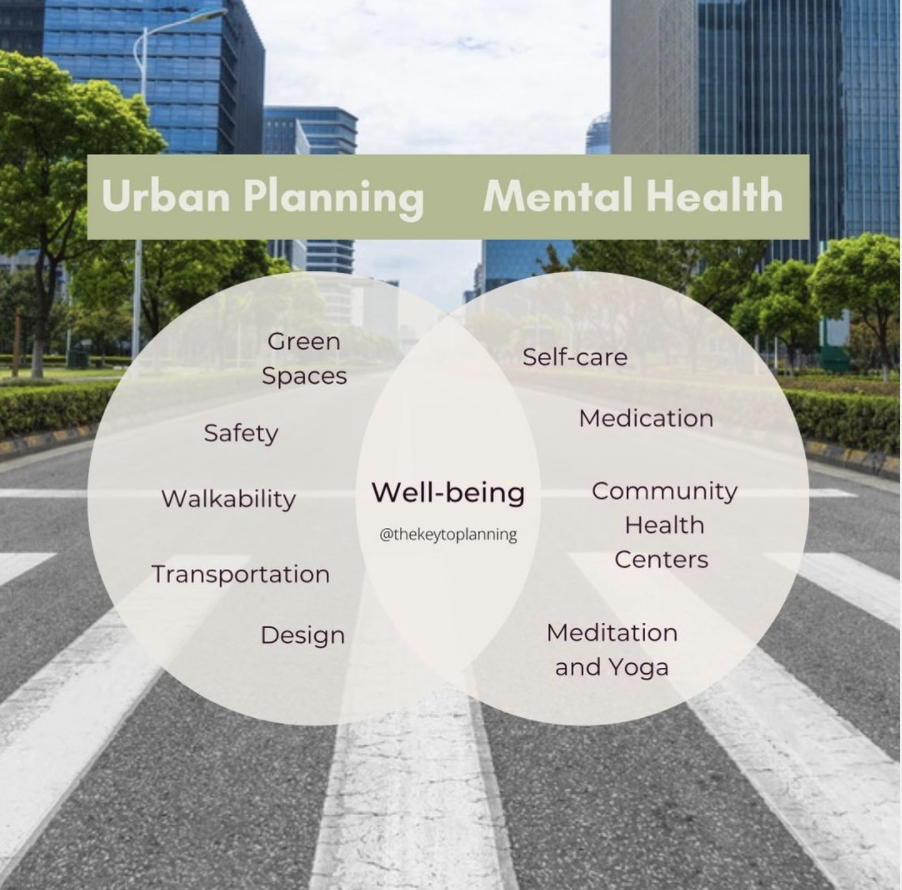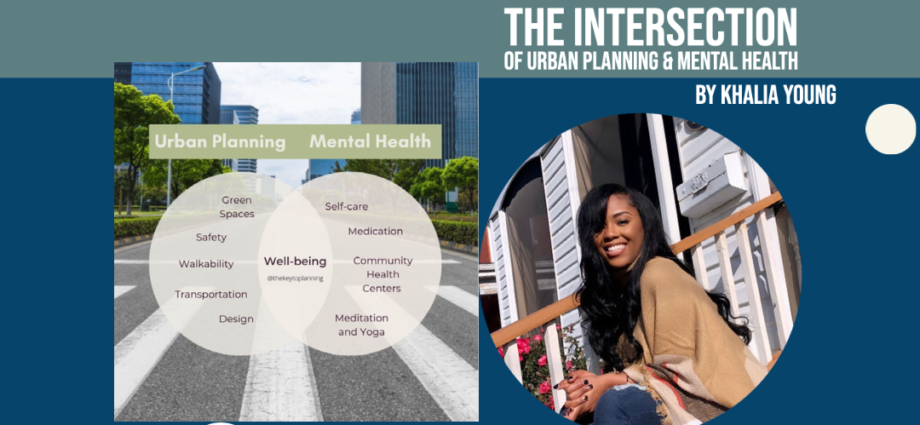By Khalia Young
Working as a Mental Health Care Coordinator and studying City and Regional Planning as a graduate student seemed overwhelming at first. I would always think to myself, “I feel like my brain is split down the middle! Mental health consuming one side and planning the other.” After a while, managing a caseload of individuals suffering from serious mental health diagnoses and mastering how to serve my community and the residents living there didn’t seem so far-fetched.
“The decisions of city officials, planners, urban designers, architects, and developers can impact not only an individual’s physical and social setting but their mental state.”
Khalia Young
I began to notice the similarities in concern of my clients and the residents I was working with, home and mental health. I was having the same conversations in totally different settings with completely different individuals. They desired safety, comfort, and more resources in their neighborhoods. My advocacy started to intertwine between the two fields. I realized the work I would do as a city planner actually required the expertise and compassion that I would carry over from the mental health field. The decisions of city officials, planners, urban designers, architects, and developers can impact not only an individual’s physical and social setting but their mental state.
As I work towards the transition from the mental health field to city planning, I decided to brainstorm how I, as a planner, can ensure that communities cater holistically to the individuals in those neighborhoods. When I think about urban planning and the duties of a city planner to build these “just cities”, I think about walkability, green spaces, access to transportation, safety, and the built environment. From my work experience and maintaining my own healthy state of mind, I know that having access to medication, community health centers, positive self-care practices, and space for meditation/yoga is vital for managing one’s mental health.

The graphic above is my visual representation of how urban planning and mental health intersect. Well-being is the state of being comfortable, healthy, and happy. Planners along with urban designers, architects, developers, and government officials should hold the moral and ethical responsibility to residents to provide them with the necessary tools and resources to protect their well-being. We can do this through practicing intentional equitable planning, building relationships with stakeholders throughout the planning process, utilizing community engagement sessions, and understanding how planning and urban design impacts resident’s mental health.
As I approach the end of my program in City and Regional Planning I no longer feel overwhelmed. I am determined, insightful, and ready to serve.

Khalia Young holds a Bachelor’s degree in Communications and Anthropology and will be obtaining her master’s degree in City and Regional Planning from the historically black university Morgan State University in May 2021. During her time at MSU she served as an intern at the Parks and People Foundation where she analyzed park plans, reviewed accessibility of the parks, and the steps taken towards an equitable process. She led her studio class as a Project Manager in the development of an implementation plan for the Arlington Inspire Community Garden in Park Heights. Khalia currently serves as a Fair Housing Intern for the Baltimore Office of Equity and Civil Rights where she has conducted workshops, assisted in planning for Fair Housing Month, and launched monthly informational sessions for the public. Her planning experience expands internationally to Treviso, Italy where she studied global design in local Italy and participated in the creation of a motion installation. To connect with Khalia please reach out via email: khaliliyoung@gmail.com or via LinkedIn: Khalia Young.

